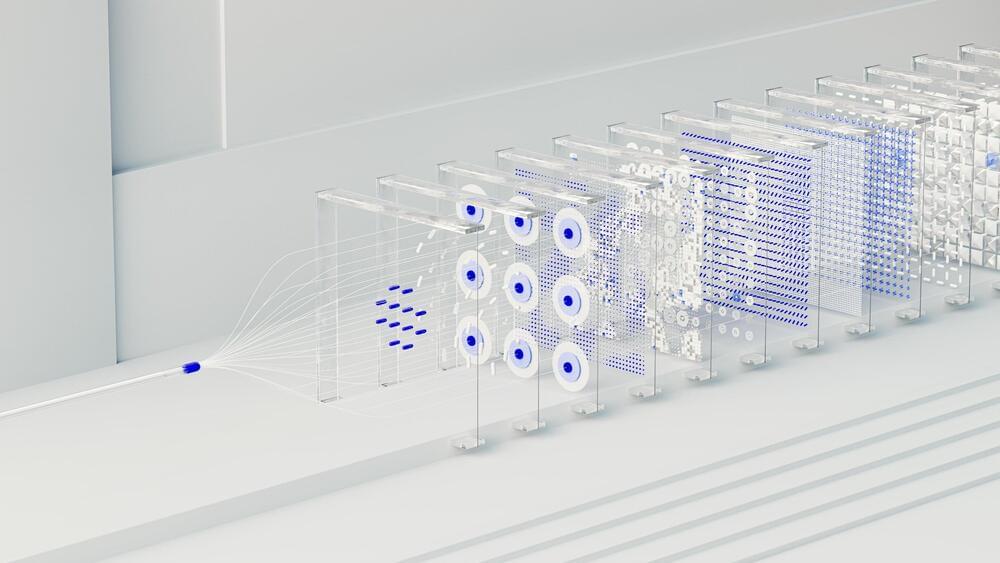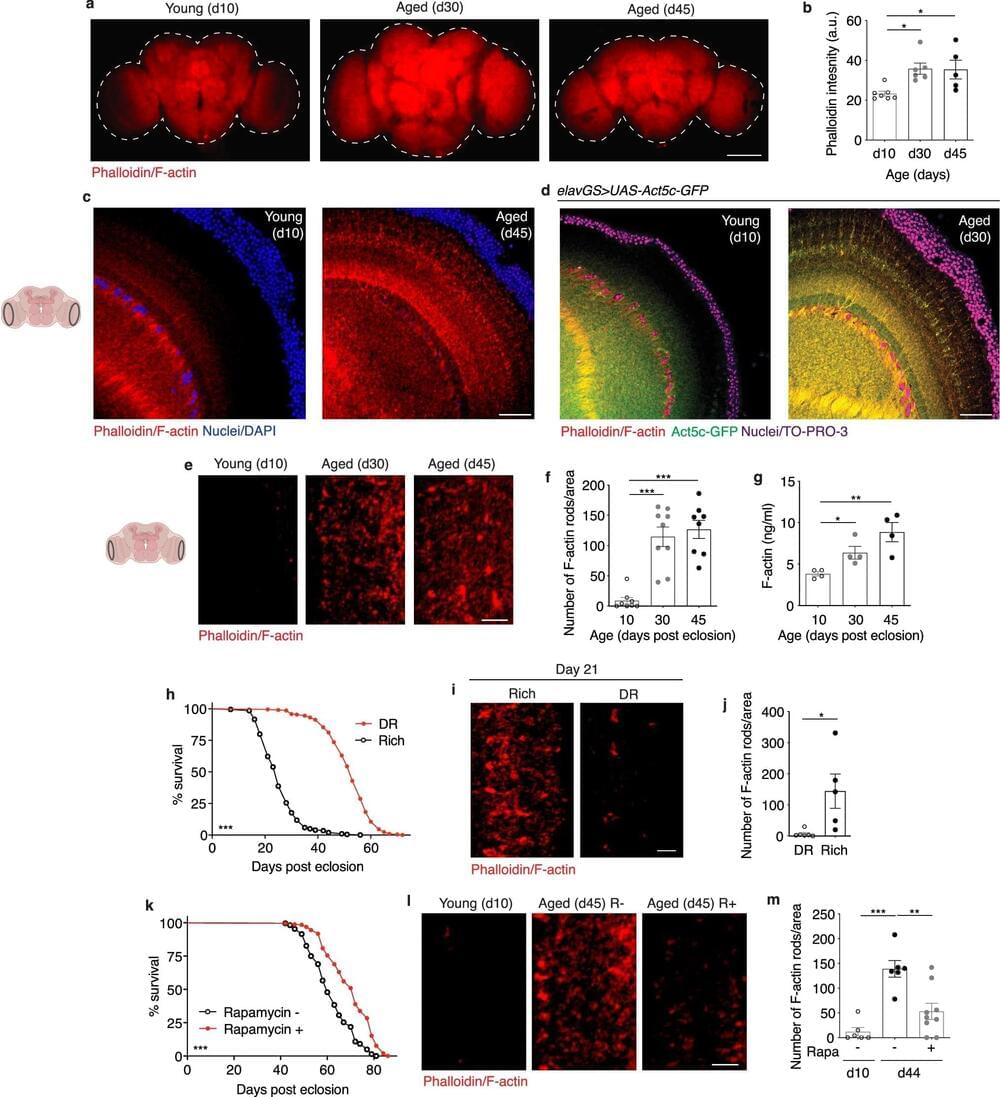Prof. Leslie Leiserowitz first became intrigued by malaria when he was a young boy in South Africa. His father, who scouted the continent in search of wood for the family business, brought back not only tales of elephants and gorillas but also skin rashes and ringing in his ears, side effects of the quinine he took to prevent malaria.
Category: biotech/medical – Page 625

Researchers use AI to find Non-Opioid Pain Relief Options
An estimated one in five Americans live with chronic pain and current treatment options leave much to be desired. Feixiong Cheng, Ph.D., Director of Cleveland Clinic’s Genome Center, and IBM are using artificial intelligence (AI) for drug discovery in advanced pain management. The team’s deep-learning framework identified multiple gut microbiome-derived metabolites and FDA-approved drugs that can be repurposed to select non-addictive, non-opioid options to treat chronic pain.
The findings, published in Cell Press, represent one of many ways the organizations’ Discovery Accelerator partnership is helping to advance research in healthcare and life sciences.
Treating chronic pain with opioids is still a challenge due to the risk of severe side effects and dependency, says co-first author Yunguang Qiu, Ph.D., a postdoctoral fellow in Dr. Cheng’s lab whose research program focuses on developing therapeutics for nervous system disorders. Recent evidence has shown that drugging a specific subset of pain receptors in a protein class called G protein-coupled receptors (GPCRs) can provide non-addictive, non-opioid pain relief. The question is how to target those receptors, Dr. Qiu explains.



Next-Level Speed: How 3D Integrated Photonics Is Accelerating Computing
A new photonic processor efficiently solves complex NP-complete problems using light, offering faster computation and scalability for future applications in optical neural networks and quantum computing.
As technology continues to evolve, the limitations of traditional electronic computers are becoming more evident, particularly when addressing highly complex computational problems. NP-complete problems, which grow exponentially in difficulty as their size increases, are among the most challenging in computer science. These issues affect a wide range of fields, from biomedicine to transportation and manufacturing. To find more efficient solutions, researchers are turning to alternative computing methods, with optical computing showing significant promise.
Breakthrough in Photonic Processor Development.
Michael Levin: What is Synthbiosis? Diverse Intelligence Beyond AI & The Space of Possible Minds
Michael Levin is a Distinguished Professor in the Biology department at Tufts University and associate faculty at the Wyss Institute for Bioinspired Engineering at Harvard University. @drmichaellevin holds the Vannevar Bush endowed Chair and serves as director of the Allen Discovery Center at Tufts and the Tufts Center for Regenerative and Developmental Biology. Prior to college, Michael Levin worked as a software engineer and independent contractor in the field of scientific computing. He attended Tufts University, interested in artificial intelligence and unconventional computation. To explore the algorithms by which the biological world implemented complex adaptive behavior, he got dual B.S. degrees, in CS and in Biology and then received a PhD from Harvard University. He did post-doctoral training at Harvard Medical School, where he began to uncover a new bioelectric language by which cells coordinate their activity during embryogenesis. His independent laboratory develops new molecular-genetic and conceptual tools to probe large-scale information processing in regeneration, embryogenesis, and cancer suppression.
TIMESTAMPS:
0:00 — Introduction.
1:41 — Creating High-level General Intelligences.
7:00 — Ethical implications of Diverse Intelligence beyond AI & LLMs.
10:30 — Solving the Fundamental Paradox that faces all Species.
15:00 — Evolution creates Problem Solving Agents & the Self is a Dynamical Construct.
23:00 — Mike on Stephen Grossberg.
26:20 — A Formal Definition of Diverse Intelligence (DI)
30:50 — Intimate relationships with AI? Importance of Cognitive Light Cones.
38:00 — Cyborgs, hybrids, chimeras, & a new concept called “Synthbiosis“
45:51 — Importance of the symbiotic relationship between Science & Philosophy.
53:00 — The Space of Possible Minds.
58:30 — Is Mike Playing God?
1:02:45 — A path forward: through the ethics filter for civilization.
1:09:00 — Mike on Daniel Dennett (RIP)
1:14:02 — An Ethical Synthbiosis that goes beyond “are you real or faking it“
1:25:47 — Conclusion.
EPISODE LINKS:
- Mike’s Round 1: https://youtu.be/v6gp-ORTBlU
- Mike’s Round 2: https://youtu.be/kMxTS7eKkNM
- Mike’s Channel: https://www.youtube.com/@drmichaellevin.
- Mike’s Website: https://drmichaellevin.org/
- Blog Website: https://thoughtforms.life.
- Mike’s Twitter: https://twitter.com/drmichaellevin.
- Mike’s Publications: https://scholar.google.com/citations?user=luouyakAAAAJ&hl=en.
- Mike’s NOEMA piece: https://www.noemamag.com/ai-could-be-a-bridge-toward-diverse-intelligence/
- Stephen Grossberg: https://youtu.be/bcV1eSgByzg.
- Mark Solms: https://youtu.be/rkbeaxjAZm4
- VPRO Roundtable: https://youtu.be/RVrnn7QW6Jg?feature=shared.
CONNECT:
- Website: https://tevinnaidu.com.
- Podcast: https://podcasters.spotify.com/pod/show/drtevinnaidu.
- Twitter: https://twitter.com/drtevinnaidu.
- Facebook: https://www.facebook.com/drtevinnaidu.
- Instagram: https://www.instagram.com/drtevinnaidu.
- LinkedIn: https://www.linkedin.com/in/drtevinnaidu.
Disclaimer: The information provided on this channel is for educational purposes only. The content is shared in the spirit of open discourse and does not constitute, nor does it substitute, professional or medical advice. We do not accept any liability for any loss or damage incurred from you acting or not acting as a result of listening/watching any of our contents. You acknowledge that you use the information provided at your own risk. Listeners/viewers are advised to conduct their own research and consult with their own experts in the respective fields.
#MichaelLevin #DiverseIntelligence #AI #Mind


Laboratory simulation finds smaller nanoparticles are subject to enhanced agglomeration in gastrointestinal tract
In a laboratory set-up simulating the human stomach and intestine, researchers at the University of Amsterdam have explored the fate of plastic nanoparticles during gastrointestinal digestion. In their paper published in the October issue of Chemosphere, they report how a range of model plastic nanoparticles interact with digestive enzymes and form agglomerates.
Dr Tina Ipe, MD — CEO, Regen Med Clinic — The Future Of Therapeutic Apheresis & Transfusion Medicine
The future of therapeutic apheresis & transfusion medicine — dr. tina ipe, MD, MPH — CEO, regen med clinic.
Dr. Tina Ipe, MD, MPH is Chief Executive Officer at Regen Med Clinic (https://www.regenmed.vip/), a medical practice which provides multi-specialty infusions, cutting-edge treatments such as therapeutic apheresis (plasmapheresis and collections), as well as novel aesthetic treatments, for patients with a variety chronic illnesses.
Dr. Ipe is a board-certified physician and clinical researcher. Before entering private practice, she was Chief Medical Officer at the Oklahoma Blood Institute, Associate Medical Director at Houston Methodist Hospital, and Division Director at University of Arkansas for Medical Sciences (UAMS). She is an expert in the fields of blood disorders, immunology, therapeutic apheresis, blood banking, and transfusion medicine. She has published more than 50 peer-reviewed manuscripts and book chapters.
Dr. Ipe received her medical degree from the Medical College of Virginia and completed her residency in clinical pathology and fellowship in transfusion medicine at the Hospital of the University of Pennsylvania. She also has an MPH from Dartmouth.
#TinaIpe #BloodDisorders #Blood #Biotherapies #Immunology #TherapeuticApheresis #BloodBanking #TransfusionMedicine #RegenerativeMedicine #TherapeuticPlasmaExchange #ConvalescentPlasma #ExtracorporealPhotopheresis #Parabiosis #Longevity #Aging #HospiceCare #STEM #Innovation #Science #Technology #Research #ProgressPotentialAndPossibilities #IraPastor #Podcast #Podcaster #Podcasting #ViralPodcast

Scientists can reverse brain aging in fruit flies by preventing buildup of a common protein
Actin, a family of proteins that help give cells their shape, are abundant throughout the body.
Humans aren’t the only ones who grow forgetful as they age—fruit flies do, too. But because fruit flies have a lifespan of only about two months, they can be a useful model for understanding the cognitive decline that comes with aging.
A new study published in Nature Communications shows that when a common cell structural protein called filamentous actin, or F-actin, builds up in the brain, it inhibits a key process that removes unnecessary or dysfunctional components within cells, including DNA, lipids, proteins and organelles.
The resulting accumulation of waste diminishes neuronal functions and contributes to cognitive decline. By tweaking a few specific genes in aging fruit flies’ neurons, the researchers prevented F-actin buildup, maintained cellular recycling and extended the healthy lifespan of fruit flies by approximately 30%.